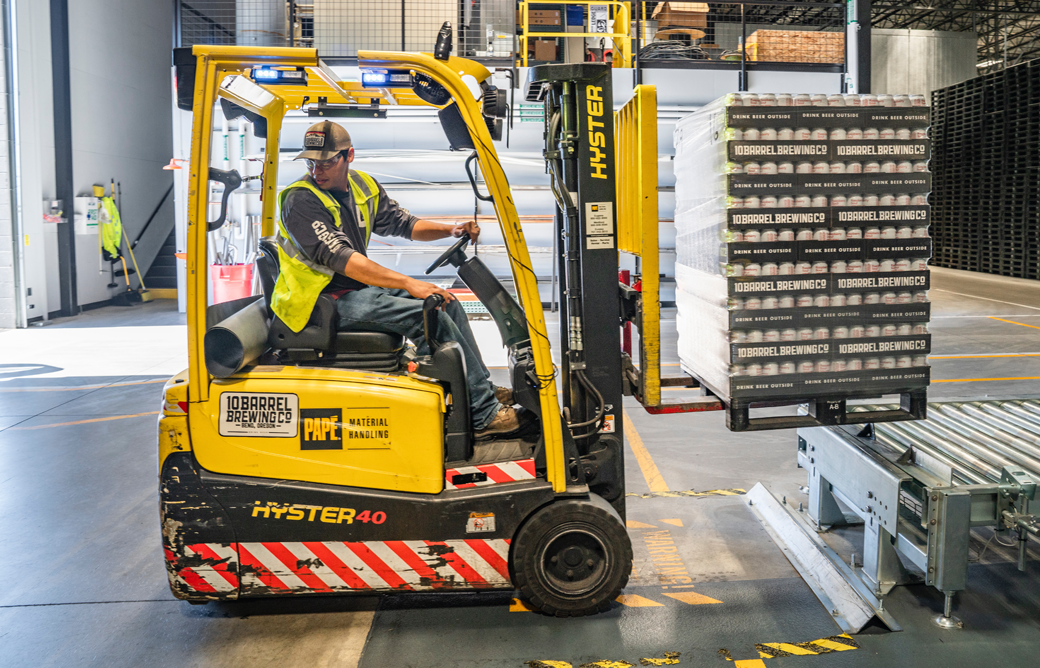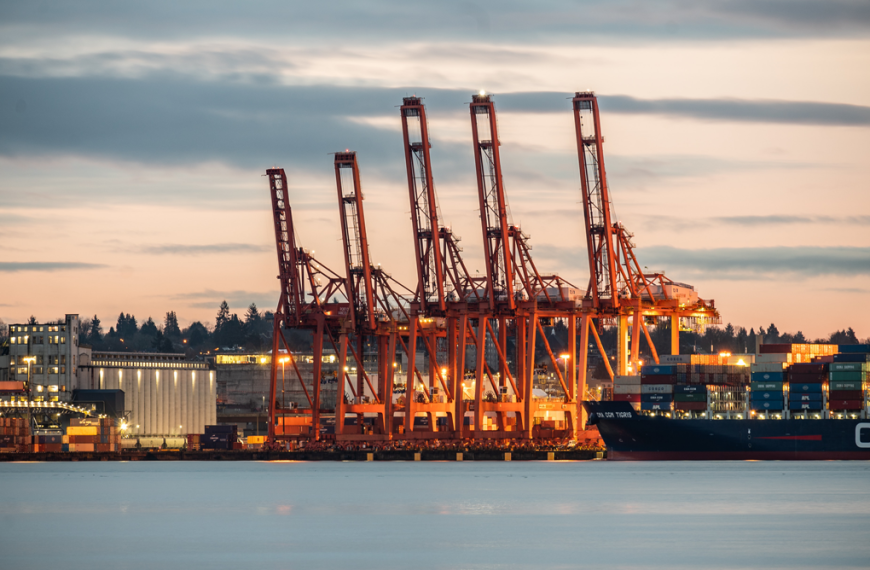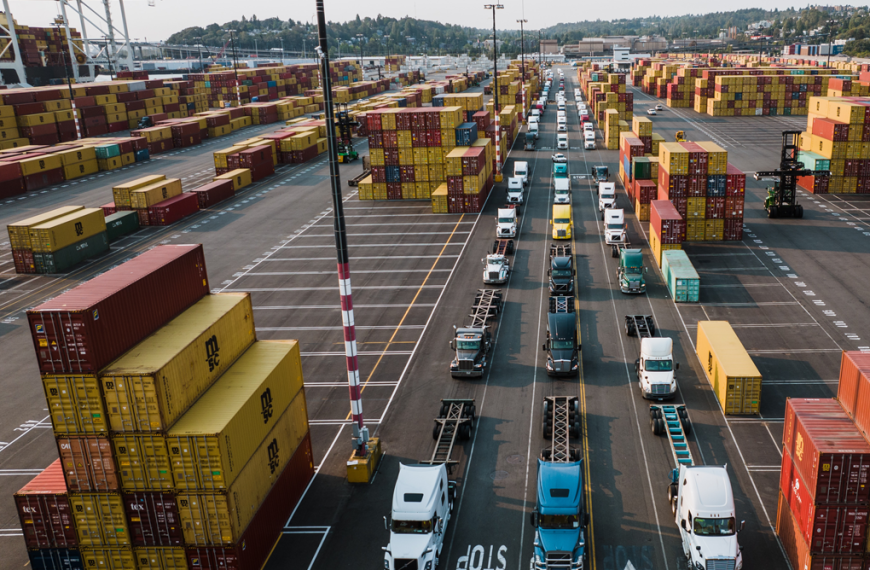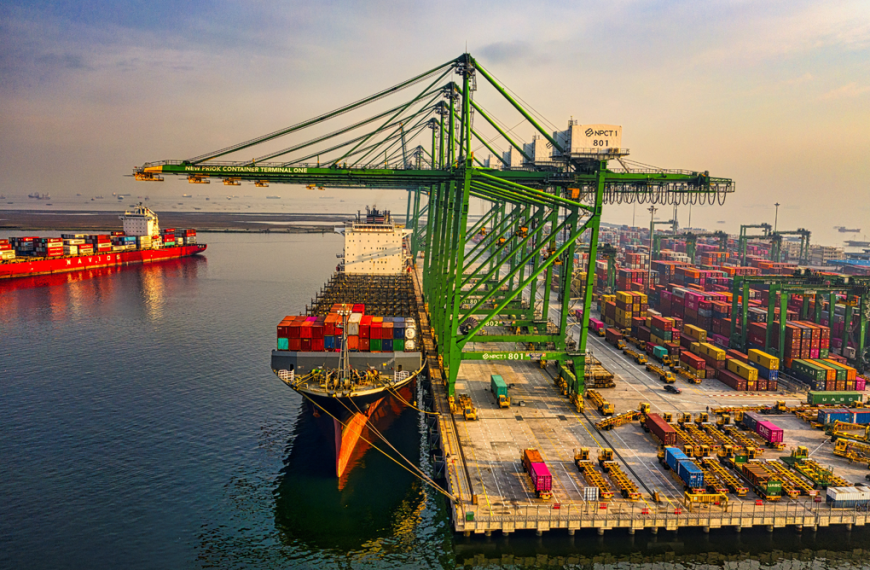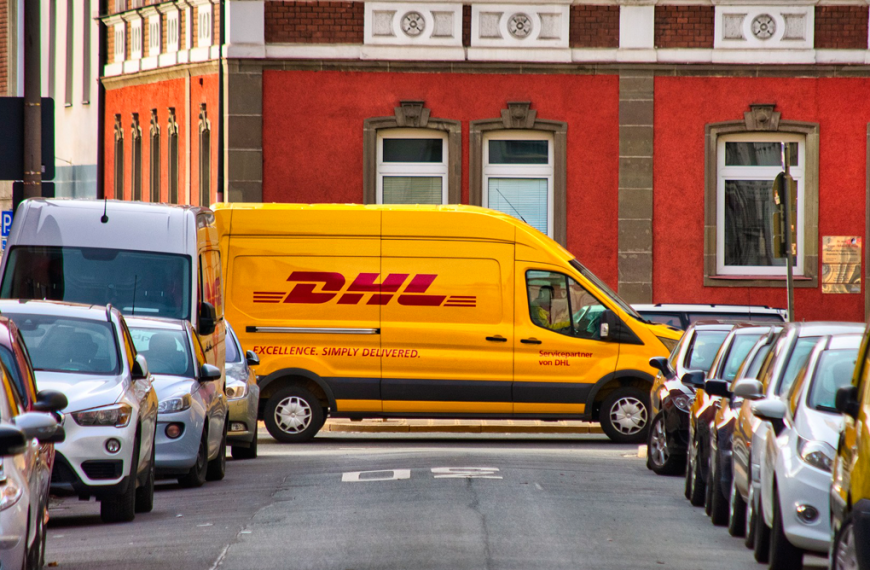Experience game-changing innovations in packaging and warehousing for efficient freight handling. Explore cutting-edge technologies, automation, sustainable solutions, robotics, and AI that revolutionize the supply chain. Discover the power of IoT and smart packaging for real-time tracking and monitoring.
Dive into warehouse layout and design strategies to optimize space and streamline operations. Ensure safety and security with advancements in freight handling. Uncover the latest last-mile delivery innovations for faster and more efficient logistics. Stay ahead with groundbreaking solutions that enhance productivity and profitability. Embrace the future of efficient freight handling through innovative packaging and warehousing techniques.
- Embracing Automation in Packaging and Warehousing: Revolutionizing the Freight Handling Landscape
- Revolutionizing Freight Handling: Sustainable Packaging Solutions for a Greener Future
- Revolutionizing Warehousing: Unleashing the Power of Robotics and AI in Freight Handling
- Unleashing the Power of IoT and Smart Packaging in Freight Handling
- Optimizing Freight Handling: Unlocking the Potential of Warehouse Layout and Design
- Securing the Future: Safety and Security Advancements in Freight Handling
- Revolutionizing Last-Mile Delivery: Innovations Shaping the Future of Freight Handling
- 1. Drone Freight Delivery: Taking to the Skies
- 2. Digital Freight Forwarding: Streamlining Operations
- 3. Freight Visibility and Tracking: Real-time Insights
- 4. Collaborative Logistics: Shared Resources, Enhanced Efficiency
- 5. Micro-Fulfillment Centers: Bringing Warehousing Closer
- Embracing the Future of Last-Mile Delivery
- Frequently Asked Questions (FAQs)
- Related Articles
Embracing Automation in Packaging and Warehousing: Revolutionizing the Freight Handling Landscape
In today’s fast-paced world of freight transportation, where efficiency and accuracy reign supreme, innovative solutions have emerged to transform the way we handle shipments. One such game-changer is automation in packaging and warehousing, which has revolutionized the freight industry.
By leveraging cutting-edge technologies, businesses can optimize their operations and stay one step ahead in the competitive market.
The Power of Automation: Enhancing Freight Handling
1. Streamlined Freight Handling with Automated Systems
With the integration of automation, freight handling becomes a seamless process. From sorting to storing, packaging to tracking, automated systems ensure speed and precision, minimizing human error and increasing productivity. By eliminating time-consuming manual tasks, businesses can focus on strategic decision-making and value-added activities.
2. Ensuring Freight Security and Visibility
In an era where freight insurance and visibility are crucial, automation plays a pivotal role. Advanced tracking systems and sensor technologies enable real-time freight visibility and tracking, providing stakeholders with accurate information about shipment location, condition, and estimated delivery times. This level of transparency enhances customer satisfaction and strengthens supply chain partnerships.
3. Unleashing the Potential of Drone Freight Delivery
Imagine a future where drones gracefully maneuver through the skies, swiftly delivering packages to their destinations. The advent of drone freight delivery holds immense promise for the industry. Drones offer unparalleled speed, cost-effectiveness, and access to remote areas. While still in its nascent stages, this innovative method is poised to disrupt traditional delivery models and redefine the logistics landscape.
Overcoming Challenges: Navigating the Freight Industry
While automation brings immense benefits, it’s essential to address the challenges inherent in the freight industry. Here are a few critical areas that require attention:
1. Cold Chain Logistics: Maintaining Product Integrity
The cold chain logistics sector faces unique challenges in preserving the quality and integrity of temperature-sensitive goods. Automated temperature control systems, data analytics, and IoT-enabled sensors are vital for ensuring the safe transportation of perishable items such as food, pharmaceuticals, and chemicals.
2. Optimizing Freight Rates with Data-Driven Strategies
Accurate and competitive freight rate management is crucial for maintaining profitability. Leveraging automation and advanced analytics, businesses can make informed decisions, optimize pricing strategies, and identify cost-saving opportunities, ultimately boosting their bottom line.
The Future of Freight Handling: Embracing Innovation
1. Digital Freight Forwarding: The Power of Connectivity
In the age of digital transformation, digital freight forwarding has emerged as a disruptive force. By leveraging digital platforms, businesses can streamline documentation, enhance communication, and improve collaboration between various stakeholders. This digitization of processes enables seamless and efficient freight handling from end to end.
2. Ensuring Freight Transportation Security
With increasing concerns over cargo theft and security breaches, robust freight transportation security measures are essential. Automated access control, video surveillance, and IoT-enabled devices enhance security and enable real-time monitoring, mitigating risks and ensuring the safe passage of goods.
3. The Role of Freight Brokerage in Seamless Operations
Freight brokerage acts as a vital intermediary, connecting shippers and carriers for smooth freight operations. Automation empowers freight brokers with enhanced visibility, accurate data analysis, and streamlined communication, enabling them to match the right carrier with the right shipper and optimize the transportation process.
4. Mastering Last-Mile Delivery
The final leg of the supply chain, last-mile delivery, presents unique challenges. Automation can revolutionize this stage, leveraging technologies such as route optimization algorithms, delivery drones, and smart lockers. These innovations optimize delivery routes, reduce costs, and enhance customer satisfaction by providing convenient delivery options.
A Glimpse into the Future: Sea Freight and Air Freight
Table: Comparison of Sea Freight and Air Freight
| Sea Freight | Air Freight | |
|---|---|---|
| Speed | Relatively slower compared to air transport | Rapid delivery |
| Cost | Cost-effective for large shipments or bulk goods | Higher costs, suitable for time-sensitive shipments |
| Capacity | Ideal for bulky or heavy cargo | Limited capacity, suitable for smaller shipments |
| Global Reach | Extensive coverage, especially for intercontinental shipping | Wide global coverage, with access to major airports |
| Environmental Impact | Lower carbon emissions compared to air transport | Higher carbon emissions due to fuel consumption |
As we delve into the future of freight logistics, it becomes evident that automation is driving transformative changes. By embracing automation in packaging and warehousing, businesses can enhance efficiency, increase security, and adapt to evolving customer demands. From leveraging drones for delivery to optimizing freight rates with data-driven strategies, the freight industry is on the cusp of a revolution.
In this era of unprecedented technological advancements, staying ahead requires a keen eye for emerging trends, a willingness to adapt, and an openness to harnessing the power of automation. Embrace the future of freight handling and unlock the limitless possibilities it holds for your business and the entire supply chain.

Revolutionizing Freight Handling: Sustainable Packaging Solutions for a Greener Future
In the fast-paced world of freight transportation, where efficiency and environmental responsibility go hand in hand, sustainable packaging solutions have emerged as a game-changer. By adopting innovative practices and materials, businesses can revolutionize the way they handle shipments while reducing their carbon footprint. Join us on a journey to explore the world of sustainable packaging and its profound impact on the freight industry.
The Power of Sustainable Packaging: Redefining Freight Handling
1. Embracing Environmentally Friendly Materials
Say goodbye to traditional packaging materials that harm the planet! Sustainable packaging focuses on utilizing eco-friendly alternatives such as biodegradable, recyclable, and compostable materials. From bio-based plastics to plant-based fibers, these options minimize waste, conserve natural resources, and promote a circular economy.
2. Enhancing Freight Visibility and Tracking
Sustainable packaging goes beyond reducing environmental impact. It also incorporates technology-driven solutions for freight visibility and tracking. With smart sensors, RFID tags, and IoT integration, businesses can monitor their shipments in real-time, ensuring efficient supply chain management and minimizing unnecessary delays.
3. Leveraging Drone Freight Delivery
Imagine a world where unmanned aerial vehicles gracefully transport packages, reducing congestion and emissions on the roads. Drone freight delivery offers a sustainable alternative, enabling faster, cost-effective, and eco-friendly transportation. This innovation not only enhances last-mile delivery but also minimizes carbon emissions associated with traditional transportation methods.
Overcoming Freight Industry Challenges: The Sustainability Factor
While sustainable packaging brings numerous benefits, it also addresses key challenges faced by the freight industry. Here are a few critical areas where sustainability plays a pivotal role:
1. Tackling Cold Chain Logistics
Maintaining the integrity of temperature-sensitive goods throughout the supply chain is crucial. Sustainable packaging incorporates thermal insulation and temperature control mechanisms, enabling effective cold chain logistics. This ensures that perishable items, such as food and pharmaceuticals, remain fresh and safe during transit, reducing spoilage and minimizing waste.
2. Optimizing Freight Rates with a Green Approach
Sustainable practices not only benefit the environment but also impact the bottom line. By adopting eco-friendly packaging, businesses can optimize freight rates through reduced weight, increased stacking efficiency, and improved space utilization. This leads to cost savings and improved profitability while promoting a greener approach to transportation.
The Future of Freight Handling: Innovations and Opportunities
1. Digital Freight Forwarding for Sustainable Operations
Digital transformation has permeated the freight industry, giving rise to digital freight forwarding. By leveraging technology platforms and data analytics, businesses can streamline documentation, optimize routes, and minimize fuel consumption. This not only enhances operational efficiency but also reduces the overall environmental impact of freight transportation.
2. Prioritizing Freight Transportation Security
Sustainable packaging solutions also encompass freight transportation security. From tamper-evident seals to RFID-enabled tracking, businesses can ensure the integrity of shipments while minimizing the risk of theft or unauthorized access. This comprehensive approach promotes secure and responsible freight handling.
3. Collaboration with Freight Forwarders for Sustainable Logistics
Partnering with freight forwarders who prioritize sustainability can amplify the impact of eco-friendly packaging. Forwarders well-versed in sustainable practices can provide guidance on optimal packaging choices, transportation modes, and route planning to minimize emissions and maximize efficiency.
A Glimpse into the Future: Sea Freight vs. Air Freight
Table: Comparison of Sea Freight and Air Freight from a Sustainability Perspective
| Sea Freight | Air Freight | |
|---|---|---|
| Carbon Emissions | Lower emissions per unit of cargo | Higher emissions due to faster transit |
| Suitable for | Bulk shipments and heavy cargo | Time-sensitive shipments and smaller cargo |
| Environmental Impact | Potential for marine pollution | Increased fuel consumption and greenhouse gas emissions |
As we journey towards a greener future, sustainable packaging solutions pave the way for a more environmentally conscious freight industry. By adopting eco-friendly materials, harnessing advanced tracking technologies, and embracing innovative delivery methods, businesses can revolutionize freight handling while reducing their ecological footprint.
The time is ripe for change. Let’s embark on this sustainable freight revolution together, prioritizing responsible practices and embracing the boundless opportunities that lie ahead. By choosing sustainable packaging solutions, we not only protect the environment but also set a new standard for efficient and eco-friendly freight transportation.

Revolutionizing Warehousing: Unleashing the Power of Robotics and AI in Freight Handling
In the dynamic world of freight transportation, where efficiency and innovation drive success, the integration of robotics and artificial intelligence (AI) has emerged as a game-changer in warehousing operations. By harnessing cutting-edge technologies, businesses can revolutionize the way they handle shipments, improving accuracy, speed, and overall productivity. Join us as we explore the fascinating realm of robotics and AI in warehousing, and witness the transformation of the freight industry.
The Rise of Robotics and AI: Redefining Freight Handling
1. Enhancing Freight Handling with Robotic Automation
Robots have become key players in the realm of freight handling. Equipped with advanced sensors and precision control, they excel at repetitive tasks, such as sorting, picking, and palletizing. With their tireless efficiency and accuracy, robots streamline warehouse operations, reducing human error and boosting productivity.
2. Unleashing the Power of Artificial Intelligence
AI systems have revolutionized the way we manage warehouses. Through machine learning algorithms, artificial intelligence analyzes vast amounts of data to identify patterns, optimize inventory management, and predict demand. These insights enable businesses to make informed decisions, minimize stockouts, and improve overall supply chain efficiency.
3. Advancing Freight Visibility and Tracking with AI
Freight visibility and tracking are critical components of efficient supply chain management. AI-powered systems enable real-time freight visibility and tracking, utilizing sensor technology, data analytics, and machine learning algorithms. With this level of transparency, businesses can monitor shipments, identify bottlenecks, and proactively address any issues that may arise.
Overcoming Freight Industry Challenges: The Role of Robotics and AI
While robotics and AI offer significant benefits, they also address key challenges faced by the freight industry. Here are a few critical areas where these technologies excel:
1. Tackling Freight Industry Challenges
The freight industry is not without its challenges, such as labor shortages, rising customer expectations, and the need for efficient handling of diverse products. Robotics and AI provide innovative solutions by automating tasks, optimizing workflows, and ensuring the smooth movement of goods, regardless of volume or complexity.
2. Empowering Cold Chain Logistics
Cold chain logistics demand precise temperature control and monitoring. Robotics and AI systems integrate seamlessly with cold chain logistics, ensuring optimal conditions for perishable goods. With sensors, automated temperature adjustments, and AI-driven predictive analytics, businesses can maintain product integrity and minimize waste, ensuring the freshness of temperature-sensitive items.
The Future of Warehousing: Innovations and Opportunities
1. Leveraging Drone Freight Delivery
Drone technology has transformed the world of logistics, offering new possibilities for drone freight delivery. Drones equipped with AI capabilities and GPS navigation can efficiently transport small packages, reaching remote locations with ease. This innovative approach to last-mile delivery not only enhances speed and efficiency but also minimizes the environmental impact associated with traditional transportation methods.
2. Digital Freight Forwarding for Seamless Operations
Digital transformation has paved the way for digital freight forwarding. By leveraging AI-powered platforms, businesses can streamline documentation, optimize routes, and improve overall operational efficiency. These digital solutions facilitate seamless communication, enhance visibility, and enable collaborative decision-making, ultimately improving the entire freight transportation process.
3. Enhancing Freight Transportation Security
In an increasingly interconnected world, freight transportation security is paramount. Robotics and AI play a vital role in securing warehouse premises, monitoring access, and detecting anomalies. Intelligent surveillance systems, biometric authentication, and AI-driven risk analysis ensure the safe passage of goods while mitigating security threats.
A Glimpse into the Future: Robotics and AI in Warehousing
Table: Impact of Robotics and AI in Warehousing
| Robotics | Artificial Intelligence | |
|---|---|---|
| Benefits | Streamlined operations, increased productivity | Enhanced decision-making, predictive analytics |
| Applications | Sorting, picking, palletizing | Inventory optimization, demand forecasting |
| Challenges | Initial investment, integration with existing systems | Data quality, scalability |
As we embrace the era of robotics and AI in warehousing, we unlock a world of possibilities for the freight industry. With increased efficiency, improved accuracy, and enhanced decision-making capabilities, businesses can stay ahead of the competition and meet the evolving demands of customers.
The future is here, and the integration of robotics and AI is transforming the way we handle freight. Embrace this technological revolution, leverage the power of automation and intelligence, and unlock the full potential of your warehousing operations.
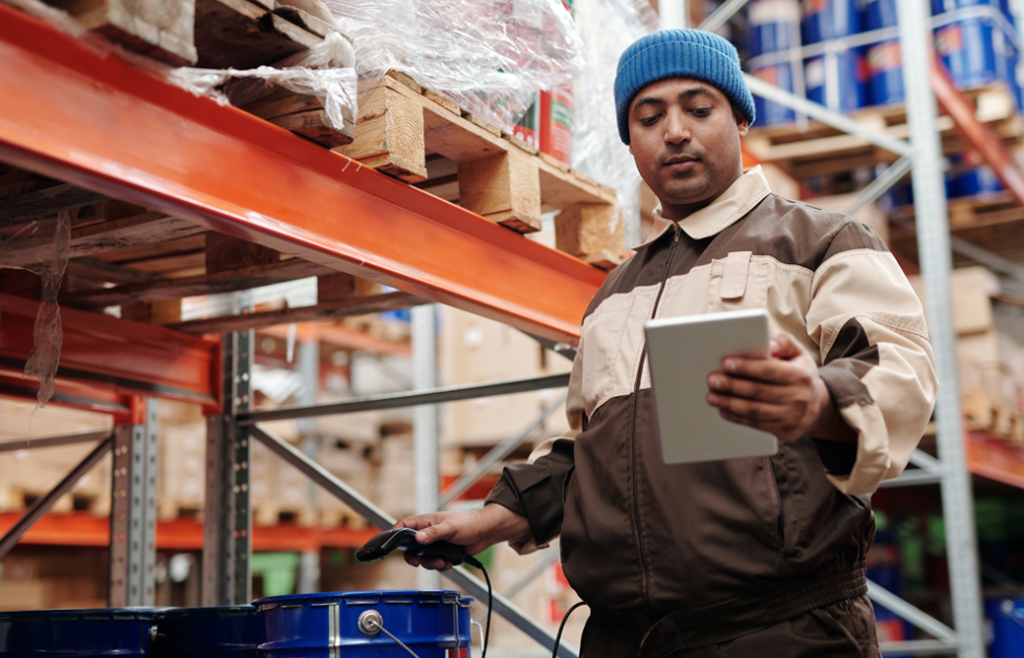
Unleashing the Power of IoT and Smart Packaging in Freight Handling
In the ever-evolving world of freight transportation, the fusion of IoT (Internet of Things) and smart packaging has revolutionized the way we handle shipments. By harnessing the potential of connected devices and intelligent packaging solutions, businesses can enhance freight handling processes, improve visibility, and deliver a superior customer experience. Join us as we delve into the realm of IoT and smart packaging, unlocking the power of innovation in the freight industry.
Embracing IoT: Revolutionizing Freight Handling
1. Freight Visibility and Tracking
Gone are the days of uncertainty in freight transportation. IoT-enabled devices, such as sensors and GPS trackers, provide real-time freight visibility and tracking, allowing businesses to monitor the location, condition, and status of shipments throughout their journey. With this wealth of data, supply chain stakeholders can make informed decisions, optimize routes, and proactively address any issues that may arise.
2. Optimizing Cold Chain Logistics
Maintaining the integrity of temperature-sensitive goods is crucial in the freight industry. Smart packaging equipped with IoT sensors and data loggers ensures the optimal conditions for perishable items during cold chain logistics. Real-time monitoring of temperature, humidity, and other environmental factors mitigates the risk of spoilage, minimizes waste, and guarantees the freshness and safety of goods.
3. Drone Freight Delivery: Efficiency and Precision
The sky’s the limit with the advent of drone freight delivery. IoT integration allows for seamless communication between drones and central control systems, enabling efficient and precise delivery of packages. Drones equipped with IoT capabilities can navigate challenging terrains, bypass traffic congestion, and reach remote locations, providing faster and more cost-effective last-mile delivery.
Unlocking the Potential of Smart Packaging
1. Enhanced Freight Security
Smart packaging acts as a robust shield for goods in transit. With IoT-enabled security features like tamper-evident seals and real-time surveillance, businesses can ensure the freight transportation security. Any unauthorized access or tampering triggers immediate alerts, enabling swift action to protect valuable shipments.
2. Improved Inventory Management
Smart packaging, coupled with IoT sensors and RFID tags, revolutionizes freight logistics and inventory management. Real-time data on stock levels, location, and expiration dates enable businesses to optimize storage, reduce stockouts, and improve overall supply chain efficiency. The seamless flow of information between smart packaging and inventory systems streamlines operations, enhances accuracy, and minimizes human error.
3. Collaborative Freight Forwarding
Digital transformation has given rise to digital freight forwarding, powered by IoT and smart packaging solutions. With connected devices, stakeholders across the supply chain can exchange information in real-time, collaborate seamlessly, and streamline processes. This integration enhances coordination between freight forwarders and other key players, resulting in smoother operations, reduced lead times, and improved customer satisfaction.
A Glimpse into the Future: Sea Freight vs. Air Freight
Table: Comparison of Sea Freight and Air Freight from an IoT and Smart Packaging Perspective
| Sea Freight | Air Freight | |
|---|---|---|
| Real-Time Monitoring | Limited real-time tracking capabilities | Enhanced real-time visibility and tracking |
| Speed and Efficiency | Slower transit times and longer lead times | Faster delivery and shorter lead times |
| Suitability | Ideal for bulky or large shipments | Suitable for time-sensitive and smaller shipments |
As we embark on the journey of IoT and smart packaging, the future of freight handling is full of possibilities. By embracing connectivity, harnessing real-time data, and leveraging intelligent packaging solutions, businesses can unlock new levels of efficiency, security, and customer satisfaction.
Embrace the power of IoT and smart packaging, reimagine your freight handling processes, and pave the way for a more connected and optimized future in the world of freight transportation.
Optimizing Freight Handling: Unlocking the Potential of Warehouse Layout and Design
In the fast-paced world of freight transportation, warehouse layout and design play a pivotal role in ensuring efficient operations, seamless workflows, and enhanced customer satisfaction. By harnessing the power of strategic planning, innovative technologies, and optimized spatial arrangements, businesses can revolutionize freight handling and overcome industry challenges. Join us as we dive into the realm of warehouse layout and design, uncovering the secrets to unlocking the full potential of your freight operations.
The Art and Science of Warehouse Layout
1. Maximizing Space Utilization
Efficient warehouse layout and design are all about maximizing the available space. By employing intelligent space utilization strategies, such as mezzanine floors, vertical racking, and optimized storage systems, businesses can make the most of their square footage. This results in higher storage capacity, improved inventory management, and streamlined freight logistics.
2. Streamlining Workflow and Material Flow
A well-designed warehouse optimizes workflow and material flow. This involves carefully planning the placement of key functional areas, such as receiving, storage, picking, and shipping zones. By minimizing travel distance, eliminating bottlenecks, and implementing smart technologies, businesses can achieve seamless and efficient freight handling processes.
3. Enhancing Safety and Security
Warehouse layout and design also encompass safety and security considerations. This includes proper placement of emergency exits, fire suppression systems, and adequate lighting. Furthermore, implementing freight transportation security measures, such as access control systems and video surveillance, ensures the protection of valuable shipments and minimizes the risk of unauthorized access or theft.
Innovative Technologies Shaping Warehouse Design
1. Automation and Robotics
The integration of automation and robotics has revolutionized warehouse operations. Automated guided vehicles (AGVs) and robotic picking systems enhance productivity and accuracy in freight handling. These advanced technologies not only reduce labor-intensive tasks but also improve order fulfillment rates, minimize errors, and accelerate the speed of operations.
2. IoT and Real-Time Visibility
The Internet of Things (IoT) has transformed warehouse management by providing real-time visibility and tracking capabilities. IoT-enabled sensors and tracking devices allow businesses to monitor the location, condition, and status of shipments throughout the warehouse. This freight visibility and tracking ensures efficient inventory management, faster order processing, and proactive issue resolution.
3. Smart Warehouse Management Systems
Digital transformation has given rise to smart warehouse management systems. These software solutions integrate various aspects of freight handling, including inventory control, order fulfillment, and labor management. By leveraging these systems, businesses can optimize processes, improve accuracy, and gain valuable insights for continuous improvement.
Optimal Warehouse Layout: Sea Freight vs. Air Freight
Table: Comparison of Warehouse Layout Considerations for Sea Freight and Air Freight
| Sea Freight | Air Freight | |
|---|---|---|
| Inventory Management | Larger storage requirements, longer inventory turnover | Smaller storage space, faster inventory turnover |
| Order Fulfillment | Longer lead times, batch processing | Shorter lead times, rapid order processing |
| Infrastructure | Larger dock areas for loading/unloading | Smaller loading/unloading areas, faster turnaround |
Designing a warehouse layout that meets the specific requirements of sea freight or air freight operations is crucial for optimizing efficiency. Whether you handle bulky shipments that require ample storage or prioritize speed and agility, tailoring the layout to your chosen mode of transportation ensures seamless operations and maximizes customer satisfaction.
Achieving Excellence in Freight Handling: Your Warehouse’s Key to Success
A well-designed warehouse layout is the cornerstone of successful freight handling. By adopting innovative technologies, optimizing space utilization, and prioritizing safety, businesses can transform their warehouse into a strategic asset. Embrace the power of warehouse layout and design, unlock the potential of your freight operations, and stay ahead in the dynamic world of freight transportation.
Securing the Future: Safety and Security Advancements in Freight Handling
In the dynamic realm of freight transportation, ensuring the safety and security of shipments is of paramount importance. With evolving industry challenges and advancements in technology, businesses must stay ahead of the curve to protect valuable cargo and maintain customer trust. Join us as we explore the world of safety and security advancements in freight handling, discovering innovative solutions that safeguard shipments throughout their journey.
1. Freight Insurance: Protecting Your Cargo
Freight insurance is an essential component of risk management in the transportation industry. By obtaining comprehensive freight insurance, businesses can safeguard their cargo against various risks, including damage, theft, and loss. Insurance coverage provides financial protection, giving peace of mind and minimizing potential losses during transit.
2. Freight Visibility and Tracking: Real-time Insights
Gone are the days of uncertainty in the freight industry. With advanced freight visibility and tracking technologies, businesses can gain real-time insights into the whereabouts of their shipments. Utilizing GPS tracking, RFID tags, and IoT-enabled sensors, supply chain stakeholders can monitor cargo locations, conditions, and movements, allowing for proactive risk mitigation and efficient logistics planning.
3. Drone Freight Delivery: Taking to the Skies
The emergence of drone freight delivery has revolutionized the last-mile logistics landscape. Drones equipped with advanced navigation systems and AI capabilities can securely transport packages to remote or hard-to-reach areas, bypassing traditional transportation challenges. This innovative solution not only enhances efficiency but also reduces human-related risks associated with last-mile delivery.
4. Freight Transportation Security: Safeguarding Shipments
Freight transportation security encompasses a range of measures to protect shipments from potential threats. From access control systems and tamper-evident seals to video surveillance and secure storage facilities, businesses employ various strategies to ensure the integrity and safety of their cargo. These security enhancements bolster confidence in the supply chain and deter unauthorized access or theft.
5. Cold Chain Logistics: Maintaining Product Integrity
Cold chain logistics is critical for the transportation of temperature-sensitive goods, such as pharmaceuticals and perishable items. With advanced refrigeration technologies, temperature monitoring systems, and strict adherence to regulatory standards, businesses can maintain the integrity and quality of their products throughout the entire supply chain. This ensures that sensitive items remain safe and suitable for consumption or use.
Table: Comparison of Safety and Security Advancements for Sea Freight and Air Freight
| Sea Freight | Air Freight | |
|---|---|---|
| Risk Factors | Inclement weather, piracy, longer transit times | Terrorism threats, shorter transit times |
| Security Measures | Maritime security protocols, vessel tracking systems | Cargo screening, airport security procedures |
| Environmental Control | Limited control over temperature and humidity | Greater control over temperature and humidity |
Securing the future of freight handling requires a comprehensive approach, considering the unique challenges and characteristics of different modes of transportation. Whether it’s sea freight or air freight, businesses must implement tailored safety and security measures to protect their cargo and maintain the integrity of the supply chain.
Investing in safety and security advancements is not just a regulatory requirement but also a competitive advantage. By prioritizing the protection of shipments, businesses can enhance customer satisfaction, minimize losses, and build a reputation for reliability and trustworthiness in the world of freight transportation.
Revolutionizing Last-Mile Delivery: Innovations Shaping the Future of Freight Handling
In the fast-paced world of freight transportation, the final leg of the journey—known as last-mile delivery—poses unique challenges. Businesses are constantly seeking innovative solutions to overcome logistical complexities, improve efficiency, and meet evolving customer expectations. Join us as we explore the exciting realm of last-mile delivery innovations, uncovering the technologies and strategies that are revolutionizing freight handling and propelling the industry forward.
1. Drone Freight Delivery: Taking to the Skies
Unmanned aerial vehicles, or drone freight delivery, are transforming the way packages are transported to their final destinations. With advanced navigation systems, precision landing capabilities, and the ability to bypass traffic congestion, drones offer unparalleled speed and efficiency in urban areas. They enable quick and secure deliveries, particularly for lightweight and time-sensitive shipments, ensuring swift fulfillment and customer satisfaction.
2. Digital Freight Forwarding: Streamlining Operations
Digital freight forwarding platforms are streamlining the last-mile delivery process by seamlessly connecting shippers, carriers, and customers. Through online portals and mobile applications, businesses can effortlessly request quotes, track shipments in real-time, and manage documentation. This digitalization not only enhances visibility and transparency but also reduces administrative burdens and enables efficient coordination between stakeholders.
3. Freight Visibility and Tracking: Real-time Insights
Real-time freight visibility and tracking technologies provide critical insights into the location, condition, and estimated time of arrival of shipments. Through the use of GPS tracking, RFID tags, and IoT-enabled sensors, businesses can monitor their packages at every stage of the last-mile journey. This enables proactive issue resolution, enhances customer communication, and ensures timely deliveries, even in dynamic urban environments.
Table: Comparison of Last-Mile Delivery Innovations
| Drone Freight Delivery | Digital Freight Forwarding | Freight Visibility and Tracking | |
|---|---|---|---|
| Key Benefits | Swift and efficient deliveries in urban areas | Streamlined operations, enhanced visibility | Real-time insights and proactive issue resolution |
| Ideal Use Cases | Lightweight and time-sensitive shipments | Shipment management and coordination | Tracking packages in dynamic environments |
4. Collaborative Logistics: Shared Resources, Enhanced Efficiency
Collaborative logistics models, such as crowdshipping and peer-to-peer delivery networks, are disrupting traditional last-mile delivery approaches. These models leverage the power of a shared economy, connecting individuals or businesses with spare capacity to transport packages. By utilizing existing resources, such as personal vehicles or local couriers, collaborative logistics offers flexible, cost-effective, and eco-friendly solutions for last-mile delivery.
5. Micro-Fulfillment Centers: Bringing Warehousing Closer
Micro-fulfillment centers are compact warehouses strategically located in urban areas, bringing storage and fulfillment operations closer to the end customers. These automated facilities utilize robotics and AI technologies to enable rapid order processing and reduce delivery distances. By shortening the distance between fulfillment centers and customers, businesses can achieve faster, more efficient last-mile deliveries.
Embracing the Future of Last-Mile Delivery
The future of freight handling lies in embracing these last-mile delivery innovations. By incorporating drone freight delivery, digital freight forwarding platforms, and advanced visibility and tracking technologies, businesses can optimize their logistics operations, delight customers with faster deliveries, and gain a competitive edge in the world of freight transportation.
Investing in the right technologies, forging strategic partnerships, and leveraging data-driven insights will pave the way for success in the last-mile delivery space. Stay agile, stay ahead, and revolutionize your freight handling operations to meet the ever-growing demands of modern customers.
Frequently Asked Questions (FAQs)
What is freight handling?
Freight handling refers to the process of managing and physically moving goods or cargo from one location to another. It involves tasks such as loading, unloading, sorting, and organizing shipments to ensure their safe and efficient transport.
What is the meaning of freight services?
Freight services encompass a range of activities and solutions provided by logistics providers to facilitate the transportation of goods. These services include freight forwarding, shipping, customs clearance, documentation, tracking, and coordination to ensure the smooth flow of goods throughout the supply chain.
What does freight services include?
Freight services include a wide array of tasks and capabilities necessary for the successful movement of goods. This typically involves freight transportation (by land, sea, or air), freight forwarding, cargo handling, packaging, labeling, warehousing, insurance, customs compliance, and other value-added services tailored to meet the specific needs of customers.
What skills do you need to be a freight handler?
To be a proficient freight handler, individuals require a set of key skills. These include strong physical stamina for manual handling, attention to detail, organizational abilities, time management, communication skills for effective coordination with team members and stakeholders, knowledge of safety protocols, and familiarity with industry-specific tools and technologies. Adaptability and problem-solving skills are also essential to navigate the dynamic nature of freight handling operations.

